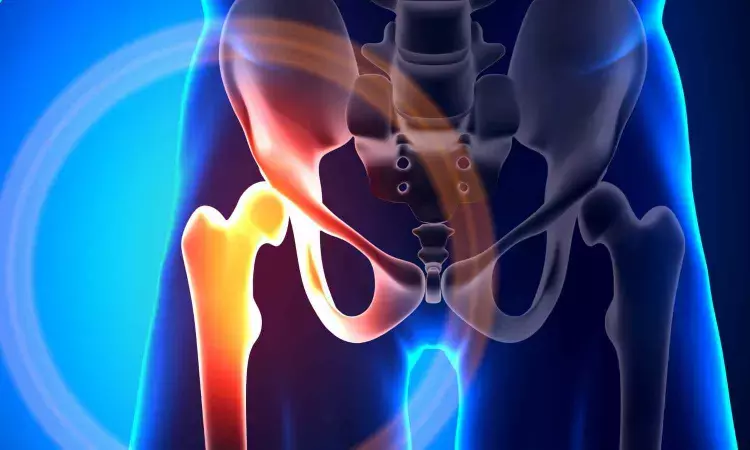- Home
- Medical news & Guidelines
- Anesthesiology
- Cardiology and CTVS
- Critical Care
- Dentistry
- Dermatology
- Diabetes and Endocrinology
- ENT
- Gastroenterology
- Medicine
- Nephrology
- Neurology
- Obstretics-Gynaecology
- Oncology
- Ophthalmology
- Orthopaedics
- Pediatrics-Neonatology
- Psychiatry
- Pulmonology
- Radiology
- Surgery
- Urology
- Laboratory Medicine
- Diet
- Nursing
- Paramedical
- Physiotherapy
- Health news
- Fact Check
- Bone Health Fact Check
- Brain Health Fact Check
- Cancer Related Fact Check
- Child Care Fact Check
- Dental and oral health fact check
- Diabetes and metabolic health fact check
- Diet and Nutrition Fact Check
- Eye and ENT Care Fact Check
- Fitness fact check
- Gut health fact check
- Heart health fact check
- Kidney health fact check
- Medical education fact check
- Men's health fact check
- Respiratory fact check
- Skin and hair care fact check
- Vaccine and Immunization fact check
- Women's health fact check
- AYUSH
- State News
- Andaman and Nicobar Islands
- Andhra Pradesh
- Arunachal Pradesh
- Assam
- Bihar
- Chandigarh
- Chattisgarh
- Dadra and Nagar Haveli
- Daman and Diu
- Delhi
- Goa
- Gujarat
- Haryana
- Himachal Pradesh
- Jammu & Kashmir
- Jharkhand
- Karnataka
- Kerala
- Ladakh
- Lakshadweep
- Madhya Pradesh
- Maharashtra
- Manipur
- Meghalaya
- Mizoram
- Nagaland
- Odisha
- Puducherry
- Punjab
- Rajasthan
- Sikkim
- Tamil Nadu
- Telangana
- Tripura
- Uttar Pradesh
- Uttrakhand
- West Bengal
- Medical Education
- Industry
Add on topical Testosterone to Exercise confers No Benefit in Hip Fracture Recovery among Older Women: JAMA

Hip fractures, often a result of a fall, are the most serious type of osteoporotic fracture because they are accompanied by considerable pain, loss of muscle and bone strength, reduced mobility and independence with daily activities, and increased risk for future fractures and death. More than 200,000 American women every year experience hip fractures, and up to three-quarters of them never fully regain their ability to resume normal activities like walking, even after undergoing weeks of exercise rehabilitation.
In a pressing effort to test new treatments, researchers conducted a clinical trial to see whether applying a testosterone gel with exercise could improve function and mobility in these patients. Testosterone is a hormone present in all women that declines with age and it has effects on muscle; therefore, it was hypothesized that it would augment the benefits of exercise during the recovery period.
Results published today in the journal JAMA Network Open found that testosterone gel did not improve physical function compared to a placebo in older women who were engaging in a supervised exercise program and recovering from a hip fracture. Testosterone therapy did appear to have some positive effects on short-distance mobility, which may require further study to confirm.
“Hip fractures can affect many aspects of function in older people and require multiple strategies to restore function,” said study co-author and one of the study principal investigators, Jay Magaziner, PhD, MSHyg, Professor of Epidemiology in the University of Maryland School of Medicine (UMSOM). “This study considered two approaches: the use of testosterone gel and high intensity exercise. What we learned is that the addition of testosterone to exercise is not a useful method of improving physical function in this group of women.”
The study, called STEP-HI, involved 129 women 65 and older living in the community who had a recent surgical repair of a hip fracture and experiencing mobility impairment. It is the largest such study of testosterone administration to women following a fracture of the hip and was conducted at UMSOM and seven other clinical sites throughout the country.
“Having a hip fracture is a sentinel event for patients and their families,” said study co-author and clinical site principal investigator Denise Orwig, PhD, Professor of Epidemiology and Gerontology at UMSOM who has spent more than 25 years doing research to identify strategies to maximize functional recovery after hip fracture. “While I’m disappointed that testosterone did not lead to the improvements we were expecting, the results are further evidence of how powerful exercise can be in helping hip fracture patients achieve restoration of function."
Ellen Binder, MD, lead study principal investigator and Professor of Medicine in the Division of General Medicine and Geriatrics at the Washington University School of Medicine, pointed out one bright spot in the study findings regarding the use of testosterone gel: "It is notable that at the end of the intervention period, women assigned to exercise and testosterone had a significant reduction in the use of walking aids and greater improvement in a short-distance performance measure than women assigned to exercise and placebo. This finding will need further exploration to confirm whether testosterone therapy can facilitate recovery after a hip fracture in older women.”
Reference:
Binder EF, Bartley JM, Berry SD, et al. Combining Exercise Training and Testosterone Therapy in Older Women After Hip Fracture: The STEP-HI Randomized Clinical Trial. JAMA Netw Open. 2025;8(5):e2510512. doi:10.1001/jamanetworkopen.2025.10512.
Dr Kamal Kant Kohli-MBBS, DTCD- a chest specialist with more than 30 years of practice and a flair for writing clinical articles, Dr Kamal Kant Kohli joined Medical Dialogues as a Chief Editor of Medical News. Besides writing articles, as an editor, he proofreads and verifies all the medical content published on Medical Dialogues including those coming from journals, studies,medical conferences,guidelines etc. Email: drkohli@medicaldialogues.in. Contact no. 011-43720751


